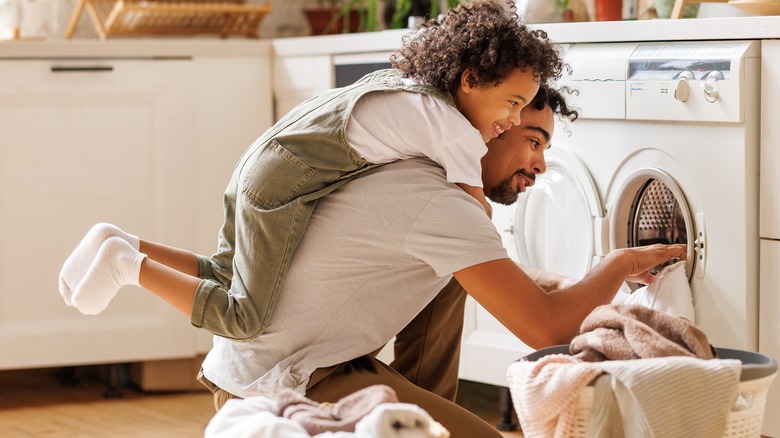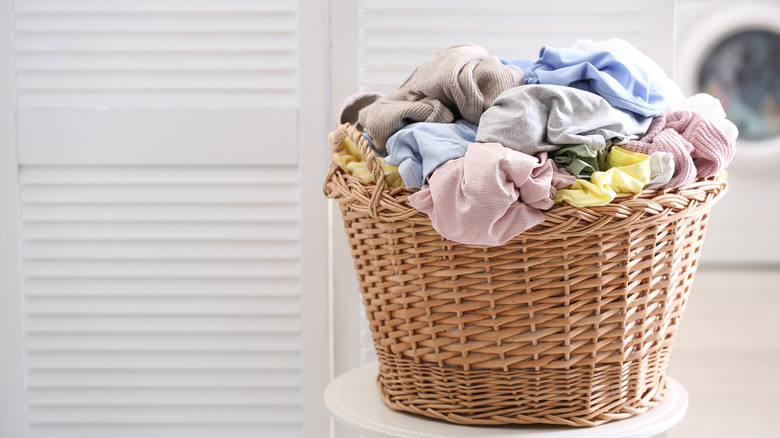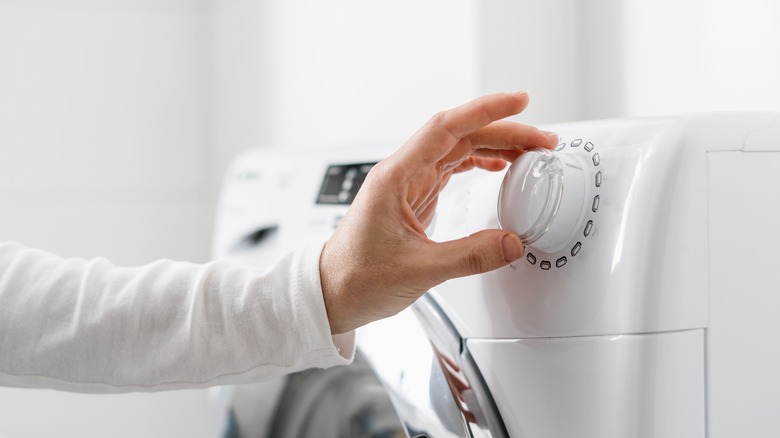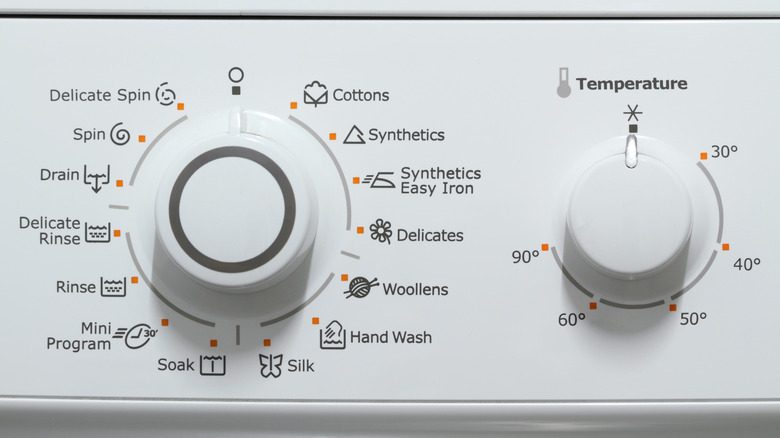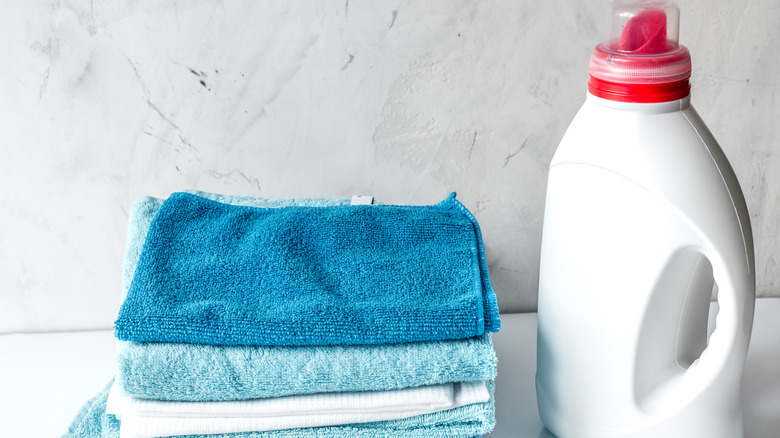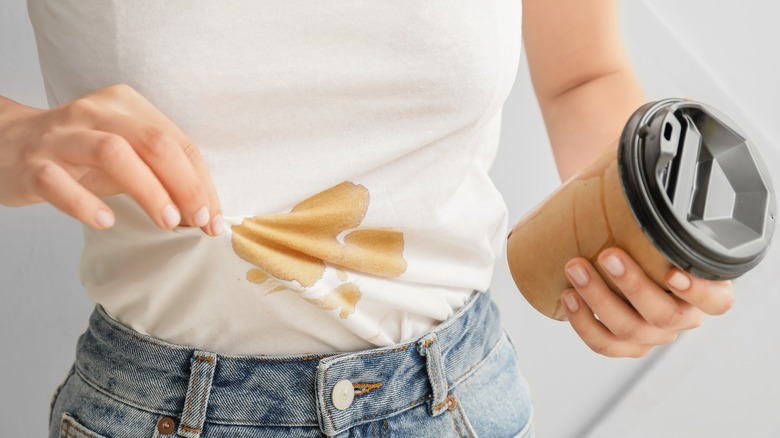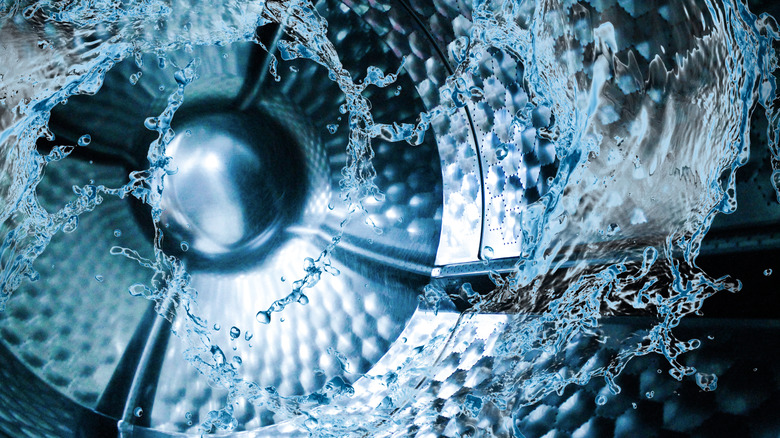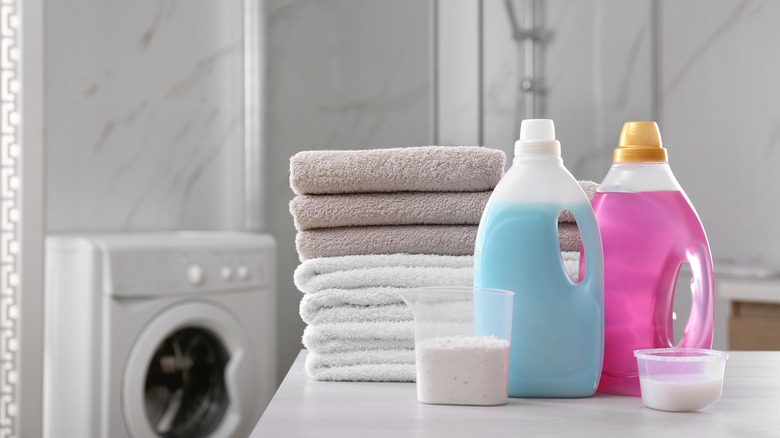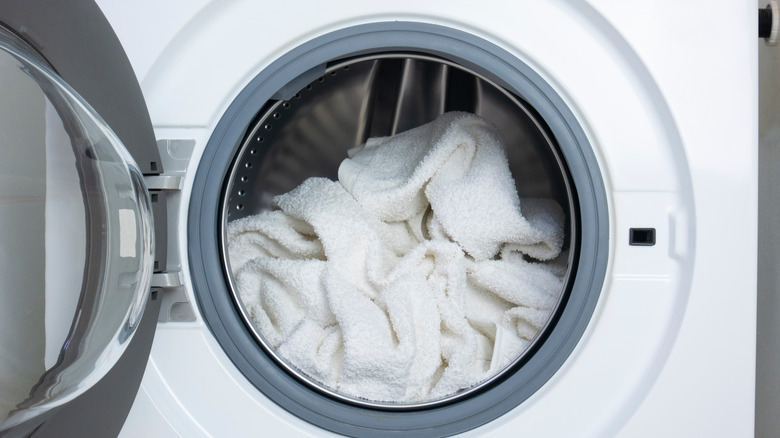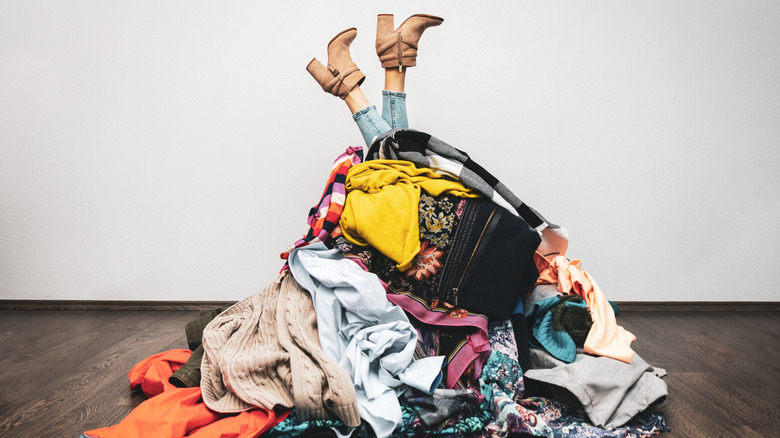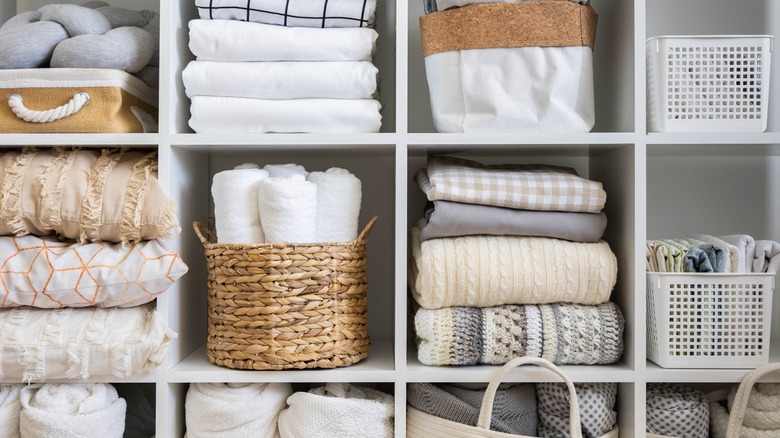Tips On Saving Water While Doing The Laundry
Saving water when doing laundry is good for both your wallet and the planet. By reducing water usage when doing laundry, you can save money on your water bill. Additionally, using less hot water can also reduce your energy, as heating water consumes a significant amount of energy. Saving water in the laundry room also reduces overall water scarcity. Water is a finite resource, and many parts of the world are experiencing water scarcity due to climate change, population growth, and over-extraction of groundwater. By reducing your water usage when doing laundry, you are helping to conserve the precious resource and ensure that there is enough of it available for everyone's needs.
Reducing your water footprint also reduces water pollution. The more water we use, the more wastewater is generated, which can contribute to water pollution if not treated properly. By using less water when doing laundry, you are reducing the amount of wastewater generated and the potential for water pollution. Finally, saving water while doing laundry also helps to mitigate climate change. The energy used to heat water for laundry contributes to greenhouse gas emissions. By reducing water usage and washing clothes in cold water, you are also reducing the amount of energy needed. Here are our favorites ways to make sure your water usage drops.
Only do laundry when you have a full load of clothes
Wait until you have a full load of laundry before you run the washing machine. Washing machines use a significant amount of water for each load, so by reducing the overall number of loads you do, you can save on your water bill each month. Doing laundry for just a few items at a time, or even just one item with a stain over and over, can waste a lot of water. Instead, hold off on doing laundry until the machine's barrel is full to conserve water resources.
In addition to saving water, fuller loads of laundry also have the added benefit of taking better care of your clothes. When a washing machine isn't to capacity, the clothes can become damaged. The clothes spin and move more than usual, subjecting them to unnecessary wear and tear. The more items in the machine at once, the heavier the overall load is. This way, you use less water to clean more clothes and don't have to worry about tears, snags, or missing buttons from flopping around too much.
Choose an efficient washing machine
While it might be a higher cost upfront, investing in a high-efficiency washing machine that uses less water than traditional models can save you water, time, and money in the long run. Efficient washing machines are specially designed to use less water than their traditional counterparts. This is because they have features like water sensors and low-water wash cycles. These features automatically allow them to use only the necessary amount of water for each load. This works well for most folks trying to reduce water usage because they don't have to go out of their way to do it. Instead, it just happens automatically in the background without much thought.
If you are also trying to conserve water for financial and environmental reasons, an efficient washing machine is a great investment for your household. In addition to the water level sensors, these machines also often have features like load-size sensing and automatic water temperature control. These features allow the machines to use only the necessary amount of energy to get your clothes clean. By using less energy, you can save money on your utility bills and reduce your overall carbon footprint. While the savings each month can be small, they add up quickly for a larger impact over time.
Use the appropriate load size setting on the machine
Using the appropriate load size setting on your washing machine is important to ensure that your clothes are properly cleaned, while also saving water. There are a few things you need to do to get the best results. Before you start your washing machine, determine the size of your load. If you're not sure which setting to choose on the machine, either weigh your clothes to get an idea using a bathroom scale or use the "handful" method. That is, if you can carry the load of laundry you're planning to do in your hands (without needing a basket, for example), it's a small load.
Next, check your washing machine manual to see how to set the load size. Some machines have a dial or button to select the load size, while others have sensors that detect the weight of the clothes and automatically adjust the water level accordingly. Over time, you can stop doing this as you get used to the process, but at the beginning, you need to check so you can be sure to save water. Once you know the size of your load and how to set the load size on your machine, you can select the appropriate setting for minimal water usage.
Use the right amount of detergent
While selecting the correct load size is important not to waste water, you must then also adjust the amount of detergent you place into the machine. The ratio of detergent to load size is essential to get right. If you put in too much detergent for the amount of water you use, your clothes can become stiff or come out of the machine covered in residue because it doesn't get rinsed off all the way. This negates all of your water-saving efforts, as you will have to rinse the clothes in a second cycle to ensure they are clean. On the flip side, if you don't put in enough detergent, there won't be enough soap to clean your clothes effectively. They might come out of the wash still smelling soiled or with stains on them. Then, you would have to wash them again to get clean, which also negates any water-saving efforts.
The same could be said for adding in any fabric softeners, as well. The conditioning liquid can make clothes softer and more comfortable to wear. Yet if you use too much of it, you need to set your machine for an extra rinse cycle to wash it all out. To avoid this, consider only using fabric softeners every once in a while. When you do decide to use them, use the smallest recommended amount to save water.
Pre-treat stains
When you have a stained garment, it's best to treat the stain before washing the entire garment. This means you can target the specific area with the stain and avoid washing the entire garment over and over again trying to get rid of the mark, which wastes water. To save even more water before washing the soiled piece of clothing, use a spray bottle to target the stain. You can do this instead of soaking the entire garment in water when pre-treating the stain.
While pre-treating, keep an eye on the progress of the stain. For smaller stains that seem to be lifting well from pre-treatment, consider hand-washing the garment rather than using a washing machine at all. This will save water and energy, as you won't need to run a full cycle just for one stained garment. You can also take steps to avoid stains occurring in the first place, like using napkins during meal times and wearing old clothing when working with paints or oils around the house.
In addition, it's important to use stain removers that are safe for the environment. Many commercial stain removers contain harsh chemicals that can be harmful to the water supply and aquatic life. The less water you use, the better, but it's also important not to taint the water you do use. When shopping, look for natural, non-toxic stain removers that are biodegradable and safe for septic systems.
Wash clothing in cold water
When washing clothes, the amount of water used is mainly determined by the size of the load and the water level selected on the washing machine. So, if you have a large load of laundry and select a high water level, you'll end up using more water regardless of whether you use hot, warm, or cold water. However, choosing the cold water cycle more often than not saves you money when the water bill comes. This is because when washing clothes in cold water, the cycle time is often shorter because the machine doesn't need to heat the water. This means that you'll use less water overall compared to a longer cycle with hot or warm water. Using a lower water temperature also uses less energy to pump and circulate through the washing machine, so less water is needed overall.
In addition, washing clothes in hot or warm water requires energy to heat the water, which can account for a significant portion of your overall energy usage. By washing clothes in cold water, you'll use less energy and save money on your utility bill. As most people set out to use less water in the laundry room for financial or environmental reasons, cold water is a win/win because it lets you do both at once. The best part it hardly requires any effort from the consumer for these great results.
Use a high-efficiency detergent
Using a high-efficiency detergent can reduce water usage because it is designed to be more concentrated than traditional detergents. This means that you can use less detergent per each load of laundry and still achieve the same level of cleaning effectiveness. By using less detergent, you will need less water to rinse the clothes to remove the soap residue, resulting in a reduced amount of water usage. This can lower your monthly water bill, the goal of many who decide to use less water.
Additionally, high-efficiency detergents are designed to work effectively in cold water, which means that you don't need to use hot water to clean your clothes. Since heating water consumes a significant amount of energy, washing clothes in cold water saves energy and reduces greenhouse gas emissions. If you are interested in an overall smaller carbon footprint, purchasing a high-efficiency detergent is an unconventional way to get a little bit closer. Finally, high-efficiency detergents are formulated to create fewer suds than traditional detergents, which means that you can use less water for the rinse cycle to clean everything off.
Consider using a front-loading washing machine
Front-loading washing machines use less water than top-loading machines. Because of this, they are a great choice if you are trying to cut down on water and energy usage at home. According to Energy Star, if you purchase a front-load washing machine that is certified by the organization, you can use 45% less energy and 50% less water than a top-load agitator washer. This is because front-load washing machines are specially designed to use less water than top-load machines. These front-load machines have a drum that is oriented horizontally and rotates around a central axis. The drum only needs to be partially filled with water to clean the clothes effectively, whereas top-load machines require a full tub of water to operate.
Many front-load washers also have water-saving wash cycles that use even less water to clean clothes. For example, some models have a "quick wash" cycle that uses a shorter wash time and less water. Front-load washing machines tend to have high spin speeds that remove more water from the clothes at the end of the wash cycle. This means that less water is needed for the rinse cycle, and clothes can be dried more quickly, reducing the overall amount of water used. Purchasing a new washing machine can be expensive at the onset, but the costs recouped from a lower water and energy bill can make up for it over time.
Don't wash clothes unnecessarily
To save water while doing laundry, you can make it a point to avoid washing clothes unnecessarily to do less laundry overall. As a general rule, it's recommended to wash your undergarments and socks after each wear for hygiene purposes. However, for clothing that doesn't come into direct contact with your skin and isn't visibly dirty or smelly, you may be able to wear it a few times before washing. It's important to use your judgment and consider many factors when deciding how often to wash your clothing.
When choosing whether to postpone washing an item, first consider the type of clothing in question. Some fabrics, such as synthetic materials, may hold onto sweat and odors more than others. They would require more frequent washing. Natural fibers such as cotton and linen are more breathable and may require less frequent washing because they don't hold onto smells as much. In addition, think about your level of everyday activity. If you're engaging in activities that cause you to sweat more, such as working out or spending time in hot weather, you may need to wash your clothes more frequently than if you're just sitting at a desk all day. If you are making an active choice to use less water, you might need to tweak your activity level to accommodate it.
Reuse your towels for a little longer
Consider reusing your towels a few times before washing them, which will help save water in the laundry room. Towels take up a lot of room in the washing machine, so by spacing out the number of loads you do, the water bill should drop significantly. There are a few things you can do to ensure your towels stay sanitary for longer between washes. The first is to allow towels to dry properly. It's important to hang your towel in a dry, well-ventilated area, so that it can dry properly between uses. Damp towels can harbor bacteria and mildew, which can lead to unpleasant odors and even illnesses. Next, to prevent the spread of germs if you live with others, it's important to avoid sharing towels with other people. Each person should have their own towel that is used exclusively by them.
Be sure to use separate towels for different purposes, such as one for your face, another for your body, and another to dry your hands after using the restroom. This separation of uses will help prevent the spread of bacteria and minimize the risk of infection, even if you go a bit longer between washes. Finally, avoid using fabric softener when you do wash the towels. Fabric softeners can reduce the absorbency of towels and make them less effective at drying your body. It can also leave a residue on towels that can harbor bacteria, which means you have to wash them more often, using more water.
